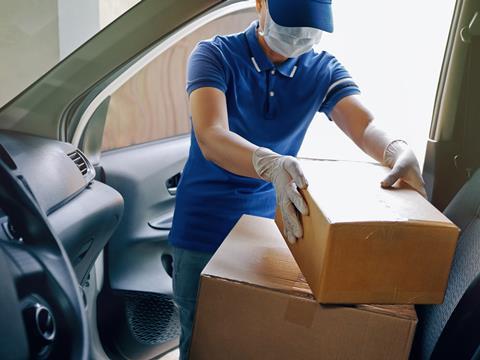
In this article, Paul Foot, partner and patent attorney at European intellectual property firm Withers & Rogers, looks at how the COVID-19 pandemic has affected the priorities of the packaging industry.
The COVID-19 pandemic is causing many consumers to re-assess their priorities when it comes to packaging, particularly due to heightened concern about biosafety. Recently, increased public awareness of the importance of environmental protection has helped industries to reduce their reliance on single-use, non-recyclable packaging. However, with the main trend in packaging shifting towards hygiene, is there a risk that some of the progress in sustainability could be undone?
Where manufacturers in other sectors have pivoted in a matter of weeks in response to emergency demands, it seems that COVID-19 failed to spark an immediate wave of innovation in the packaging industry. On the contrary, the ‘quick fix’ has been for many retailers to move back to established ‘single-use’ type packaging for hygiene reasons – for example, in coffee shops, reusable cups have been banned and some retailers are even banning reusable bags – and so demand for such packaging has remained high.
Demand for packaging such as cardboard boxes and packing materials has actually increased to fulfil online delivery orders, which have soared during the pandemic due to the rise of the stay-at-home economy. While demand levels are expected to remain high at least in the short term, it is also becoming clear that consumer preferences have altered and so packaging companies will need to adapt to avoid being overtaken.
Environmental credibility aside, consumers previously assessed the desirability of packaging largely based on appearance. Does it look stylish? Is the branding attractive? Now, with the greater focus on hygiene factors, consumers will be considering how protected a packaged product is, and whether the packaging is germ or virus-free.
To address these concerns, it’s likely that more emphasis will be placed on designing packaging elements which minimise contact areas, such as dedicated handles and marked zones for use by couriers. Increased importance may also be given to ‘tamper-proof’ packaging to increase consumer confidence that the product contained within is safe or to innovative closures that enable hygienic ‘on-the-go’ consumption.
The online delivery boom has also created new issues for retailers. With demand for online deliveries expected to remain higher than pre-pandemic levels, packaging innovators have a role to play in helping retailers to maximise vehicle space, at the same time as improving safety. For example, manufacturers could lead the way by innovating a wider range of ‘standardised’ packaging solutions, which can be easily transported and stacked. Alternatively, some innovators may be focused on producing novel packaging designs that can be better manipulated by robotic systems, for use in warehouses and distribution centres.

There is a range of other e-commerce related challenges that packaging innovators can also try to address, such as designs with improved protection for delicate products, designs that enable easier filling at the retailer side, designs that enable a product to be easily returned and designs that give a better customer experience when they open the package.
As the recovery gets underway, the packaging industry will need to reflect on market changes and adapt to the new normal. As with many businesses, packaging manufacturers have been focused on weathering the storm, but now is the time to re-energise their innovation activity. If anything, the pandemic has opened up many new opportunities.
It seems unlikely that the sustainability trend will go away, so now the challenge for packaging producers will be to balance sustainability with hygiene. Consumers will still want to see the same progress in packaging as before the pandemic – higher use of recycled materials, less ‘unnecessary packaging’, less plastic, improvements in ease of recycling – but it is important that these improvements are not made at the expense of reduced hygiene, as that trend seems to be here to stay, at least for the next few years.
For packaging businesses that are considering adapting their product offering to address these challenges, it’s important to put in place the right strategy to protect their innovations on the way to market. It’s likely that competitors will be undergoing the same thought-process and any novel ideas or improvements could be copied if left unprotected.
Applying for patent protection sooner rather than later is often the right strategy, even if the concept continues to be developed after this point, to account for further changes in the situation and the lasting effects of the pandemic becoming better known.










